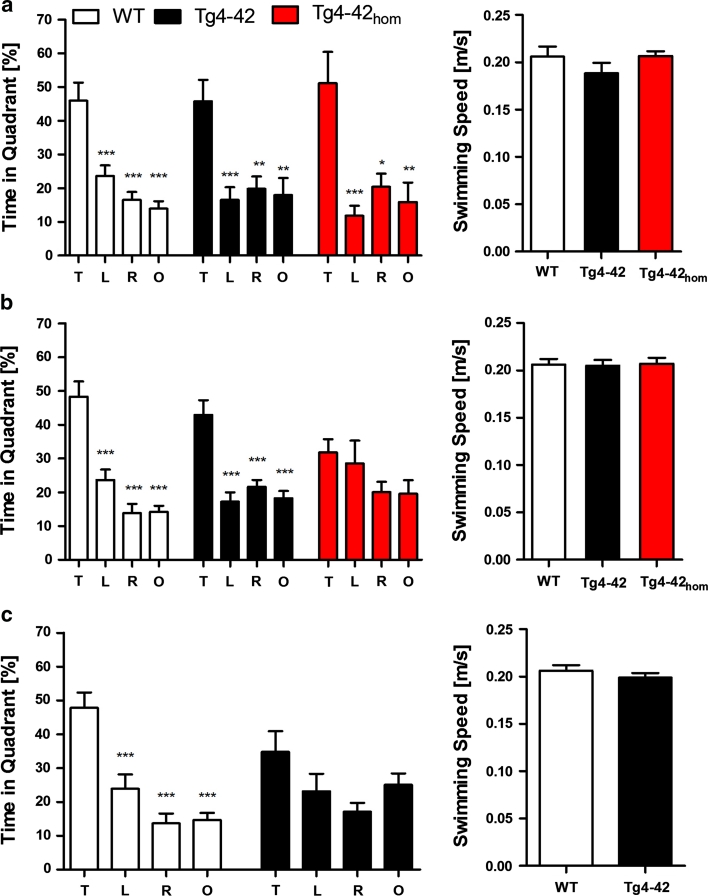Fig. 7.
Memory deficits in aged Tg4-42 mice shown in the probe trial of the Morris water maze. Hemizygous Tg4-42 mice and WT (C57BL/6 J) littermate controls were tested at a 3, b 8 and c 12 months of age. In addition, homozygous Tg4-42 (Tg4-42hom) mice were assessed at 3 and 8 months. Each group was sex- and age-matched and contained 10–15 mice. The probe trial was given at the end of the learning phase (acquisition training) to assess spatial reference memory. Quadrant preference and swimming speed for the first 30 s of the probe trial were analyzed. a Tg4-42, Tg4-42hom and WT mice showed no impairment in spatial reference memory at 3 months of age. Both groups spent a significant greater percentage of the time in the target quadrant. b The probe trial revealed significantly reduced learning behavior for Tg4-42hom mice at 8 months of age as they showed no preference for the target quadrant. In contrast, hemizygous Tg4-42 and WT mice had no learning deficits at this age. c At 12 months of age, hemizygous Tg4-42 mice showed no quadrant preference revealing an impaired spatial reference memory. However, WT mice still learned, as they had a significant preference for the target quadrant. a–c No differences in swimming speed between WT, Tg4-42 and Tg4-42hom were detected at any tested age. T target quadrant, L left quadrant, R right quadrant, O opposite quadrant, m age in months. Quadrant preference: Two-way analysis of variance (ANOVA) followed by Bonferroni multiple comparisons. Swimming speed: unpaired t-test. ***p < 0.001; **p < 0.01

